
It's a Wonderful Life is a 1946 American Christmas supernatural drama film produced and directed by Frank Capra. It is based on the short story and booklet "The Greatest Gift" self-published by Philip Van Doren Stern in 1943, which itself is loosely based on the 1843 Charles Dickens novella A Christmas Carol. The film stars James Stewart as George Bailey, a man who has given up his personal dreams in order to help others in his community and whose thoughts of suicide on Christmas Eve bring about the intervention of his guardian angel, Clarence Odbody. Clarence shows George all the lives he touched and what the world would be like if he had not existed.

Letchworth State Park is a 14,427-acre (5,838 ha) New York State Park located in Livingston County and Wyoming County in the western part of the State of New York. The park is roughly 17 miles (27 km) long, following the course of the Genesee River as it flows north through a deep gorge and over several large waterfalls. It is located 35 miles (56 km) southwest of Rochester and 60 miles (97 km) southeast of Buffalo, and spans portions of the Livingston County towns of Leicester, Mount Morris and Portage, as well as the Wyoming County towns of Castile and Genesee Falls.

Skaneateles is an affluent village in the town of Skaneateles, in Onondaga County, New York, United States. The village is named after, and located on the shores of, Skaneateles Lake, one of the Finger Lakes. As of the 2020 census, the village had a population of 2,533 residents.

SouthwarkBridge is an arch bridge in London, for traffic linking the district of Southwark and the City across the River Thames. Besides when others are closed for temporary repairs, it has the least traffic of the Thames bridges in London.
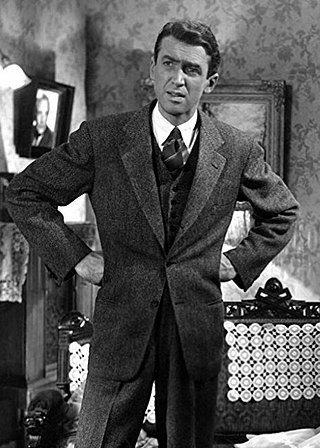
George Bailey is a fictional character and the protagonist in Frank Capra's 1946 film It's a Wonderful Life. The character is a building and loan banker who sacrifices his dreams in order to help his community of Bedford Falls to the point where he feels life has passed him by. Eventually, due to difficulties in keeping the building and loan solvent, Bailey falls into despair so deep that he contemplates suicide, until a guardian angel, Clarence Odbody, gives him a valuable perspective on the worth of his life. George finds through Odbody's angelic power and gift what life would be like if he didn't have his wife, Mary, his children and friends, and what their lives and the social structure of Bedford Falls would be like without him.

New York State Route 5 (NY 5) is a state highway that extends for 370.80 miles (596.74 km) across the state of New York in the United States. It begins at the Pennsylvania state line in the Chautauqua County town of Ripley and passes through Buffalo, Syracuse, Utica, Schenectady, and several other smaller cities and communities on its way to downtown Albany in Albany County, where it terminates at U.S. Route 9 (US 9), here routed along the service roads for Interstate 787 (I-787). Prior to the construction of the New York State Thruway, it was one of two main east–west highways traversing upstate New York, the other being US 20. West of New York, the road continues as Pennsylvania Route 5 (PA 5) to Erie.

Karolyn Grimes is an American actress. She is best known for her role as Zuzu Bailey in the classic 1946 Frank Capra film It's a Wonderful Life. She also played Debby Brougham in the 1947 film The Bishop's Wife.
A movie ranch is a ranch that is at least partially dedicated for use as a set in the creation and production of motion pictures and television shows. These were developed in the United States in southern California, because of the climate.
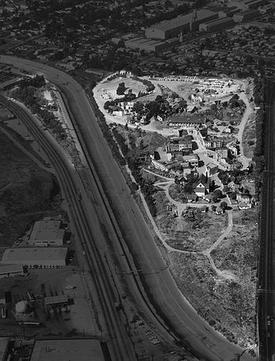
RKO Forty Acres was a film studio backlot in the United States, owned by RKO Pictures, located in Culver City, California. Best known as Forty Acres and "the back forty," it was also called "Desilu Culver," the "RKO backlot," and "Pathé 40 Acre Ranch," depending on which studio owned the property at the time. For nearly 50 years it was known for its outdoor full-scale sets, such as Western Street, Atlanta Street, and Main Street and was used in many films and television series.

Henry F. Potter is a fictional character, a villainous robber baron and the main antagonist in the 1946 Frank Capra film It's a Wonderful Life. He was portrayed by the veteran actor Lionel Barrymore.
Little Beard's Town, also known as Chenussio and "Genesee Castle", was a powerful Seneca town in the Genesee River Valley near modern Leicester in Livingston County, New York, where Cuylerville stands today.
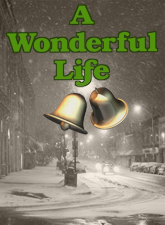
A Wonderful Life is a 1986 musical with a book and lyrics by Sheldon Harnick and music by Joe Raposo.

It Happened One Christmas is a 1977 American made-for-television Christmas fantasy-comedy-drama film directed by Donald Wrye, starring Marlo Thomas, Wayne Rogers, Orson Welles, and Cloris Leachman. It originally premiered as The ABC Sunday Night Movie on December 11, 1977.
Philip Van Doren Stern was an American writer, editor, and Civil War historian whose story "The Greatest Gift", published in 1943, inspired the classic Christmas film It's a Wonderful Life (1946).
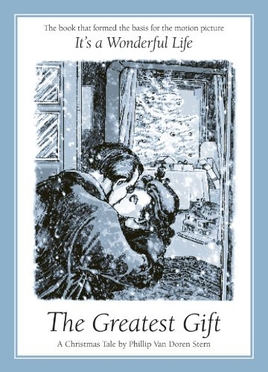
"The Greatest Gift" is a 1943 short story written by Philip Van Doren Stern, loosely based on the Charles Dickens 1843 novella A Christmas Carol, which became the basis for the film It's a Wonderful Life (1946). It was self-published as a booklet in 1943 and published as a book in 1944.
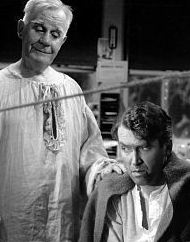
Clarence Odbody, also spelled Clarence Oddbody, is a guardian angel character in Frank Capra's 1946 film It's a Wonderful Life, where he was portrayed by Henry Travers, and in the 1990 sequel, Clarence, where he was played by Robert Carradine.
The Gould Hotel is a hotel in Seneca Falls, New York. When it was built in 1920 it was described as “the most complete and perfectly equipped of the smaller hotels of New York State." More than 80 years later, a $6.2 million renovation occurred.
Bedford Falls Productions is the production company of Marshall Herskovitz and Edward Zwick, the creators of the television series Thirtysomething and Once and Again, and producers of Legends of the Fall and Blood Diamond. The company is also known for producing the series My So-Called Life, and the Academy Award-winning films Shakespeare in Love and Traffic.

Mary Hatch Bailey is a fictional character in Frank Capra's 1946 film It's a Wonderful Life. She is the sweetheart and later wife of protagonist George Bailey. Mary is played by Donna Reed as an adult and Jean Gale as a child. She is loosely based on Mary Pratt, a character in Philip Van Doren Stern's 1943 short story The Greatest Gift.
James F. Hawkins is an American former actor, producer and writer. He is best-known for his TV roles in shows like Annie Oakley, The Adventures of Ozzie and Harriet, Leave It to Beaver, Petticoat Junction, and The Donna Reed Show; and as Tommy Bailey, son of George Bailey in the 1946 film It's a Wonderful Life.















